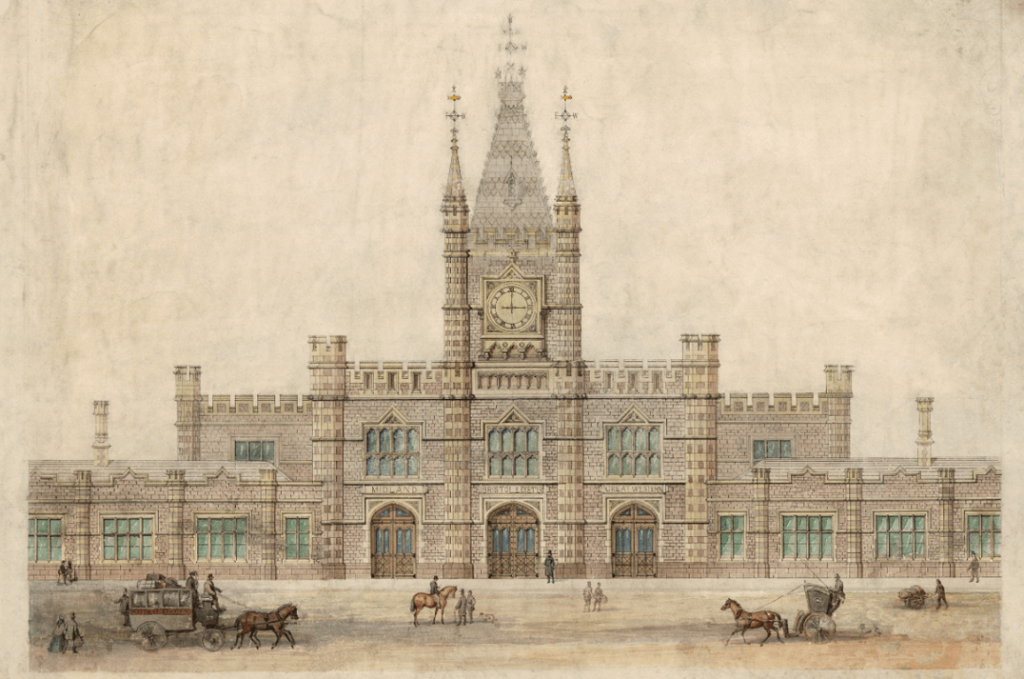The history of Bristol Temple Meads station
Built as the western terminus of the Great Western Railway’s main line from London to Bristol.
Bristol Temple Meads station has undergone many changes as it outgrew Brunel’s original building and became the railway gateway to the West Country.

The original Bristol Station, designed by I K Brunel in a ‘mock Tudor’ style was, like the original Paddington Station, a terminus which consisted of simply an arrival and a departure platform.
It opened on 31 August 1840 with trains running from Bristol as far as Bath, nearly a year before the start of through traffic to London. The station buildings had a boardroom and offices for the ‘Bristol Committee’ of the Great Western Railway.
In 1841, the broad gauge Bristol & Exeter Railway also began to run its services into Bristol Temple Meads, a curved line enabling their trains to run into the station. However, the limitations of sharing the station with the Great Western Railway meant that the B&ER opened its own temporary station in 1845 at right angles to the GWR building.
A permanent structure, built in a Jacobean style was opened by the B&ER in 1854. In 1844 the Midland Railway also began to run into Bristol, having taken over the Bristol & Gloucester Railway.
A new joint station
Traffic and the demands of the three railway companies began to outgrow Brunel’s original 1840’s structure, but it was not until 1865 that an Act was secured to rebuild Temple Meads to serve the needs of all three companies adequately. The design, in the Gothic style, was undertaken by Matthew Digby Wyatt, who had in the 1850s assisted Brunel with the ‘new’ Paddington Station.
Construction of the new Bristol Temple Meads began in 1871. Separate entrances and corresponding booking offices, with the names of the railway companies engraved in stone above them, were provided for each of the three companies. However, before the station fully opened the GWR and B&ER had amalgamated.
The first section of the station opened on 6 July 1874 and the full station, with a total of seven platforms, on 1 January 1878. An additional platform was added in 1898.
Speed to the West
As a major gateway to the West Country, Bristol Temple Meads became increasingly congested with holiday traffic, particularly in the years immediately after World War 1. In 1929 the GWR took advantage of interest free government loans to double Temple Meads in size, increasing the number of platforms from nine to fifteen.
Work on this extension, designed by P G Culverhouse, began in November 1930 and was completed in December 1935.
The original Brunel train shed functioned for 125 years until its closure on 12 September 1965. His mock hammer beam roof, built of wood to emulate Westminster Hall in London, can still be seen as part of the car park at today’s station.
Did you know?
Bristol Temple Meads takes its name from the land upon which it was built. In the 12th and 13th centuries this was owned by the Knights Templar.